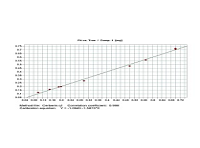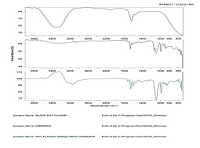Prasanth S S
Al Shifa College of Pharmacy, India
Biography
Prasanth S S is a Professor in Al Shifa College of Pharmacy, Kerala and has been awarded PhD on his research thesis entitled ‘Novel analytical techniques for quantification of the toxic phytochemical of Cerbera species’. His broad area of research interest includes development of analytical techniques for bulk drugs, formulations and natural products. During his Postgraduate studies, he was trained at the Toxicology Department, Medical College, and Trivandrum. He is experienced in analyzing drugs and toxins in various biological fluids of human body. His researches lead to the development of some analytical methods for detection and quantification of cerberin in rat plasma and serum.
Abstract
Cerberin (2-o-Acetyl neriifolin) is the principal cardiac glycoside present in the seeds of Cerbera odollam belonging to the Apocyanaceae family. The seeds of Cerbera odollam are used as a poison for suicidal as well as homicidal purpose by people around the world. Its detection in the body fluids is somewhat difficult. The aim of this study was to develop a FT-IR spectrophotometric procedure for the analysis of cerberin in rat plasma3. A Fourier transform infrared (FT-IR) spectrometric method was developed for the rapid, direct determination of cerberin in rat plasma. The universal ATR spectra was recorded and used for this study. Multiple linear regressions (MLR), with a restricted set of absorption band were used for calibration. Beer-Lambert law was used for data processing. A recovery of 98.8% of cerberin from rat plasma with a correlation coefficient of 0.9980 was obtained. The linear regression equation for cerberin was calculated to be y = -1.0943–1.5875 x, where x and y are concentration and integrated peak area, respectively. The method had excellent reproducibility for the standard of 0.2 mg, 0.19±0.107% (n=6). The recovery test is an experimental design to verify the relationship between the amount of substance added and the amount quantified by this assay. In this test, the observed concentrations of pure cerberin in rat plasma were not significantly different from the stated concentrations by Student's t-test, P=0.05% (100.06±1.28%, n=3). The method gave rise to linear data in the range 0.1–0.8 mg with accuracy and precision in the range 0.86–1.4%. Therefore, this FT-IR-spectrophotometric assay was accurate, and may be recommended for the simple quantification of cerberin.




